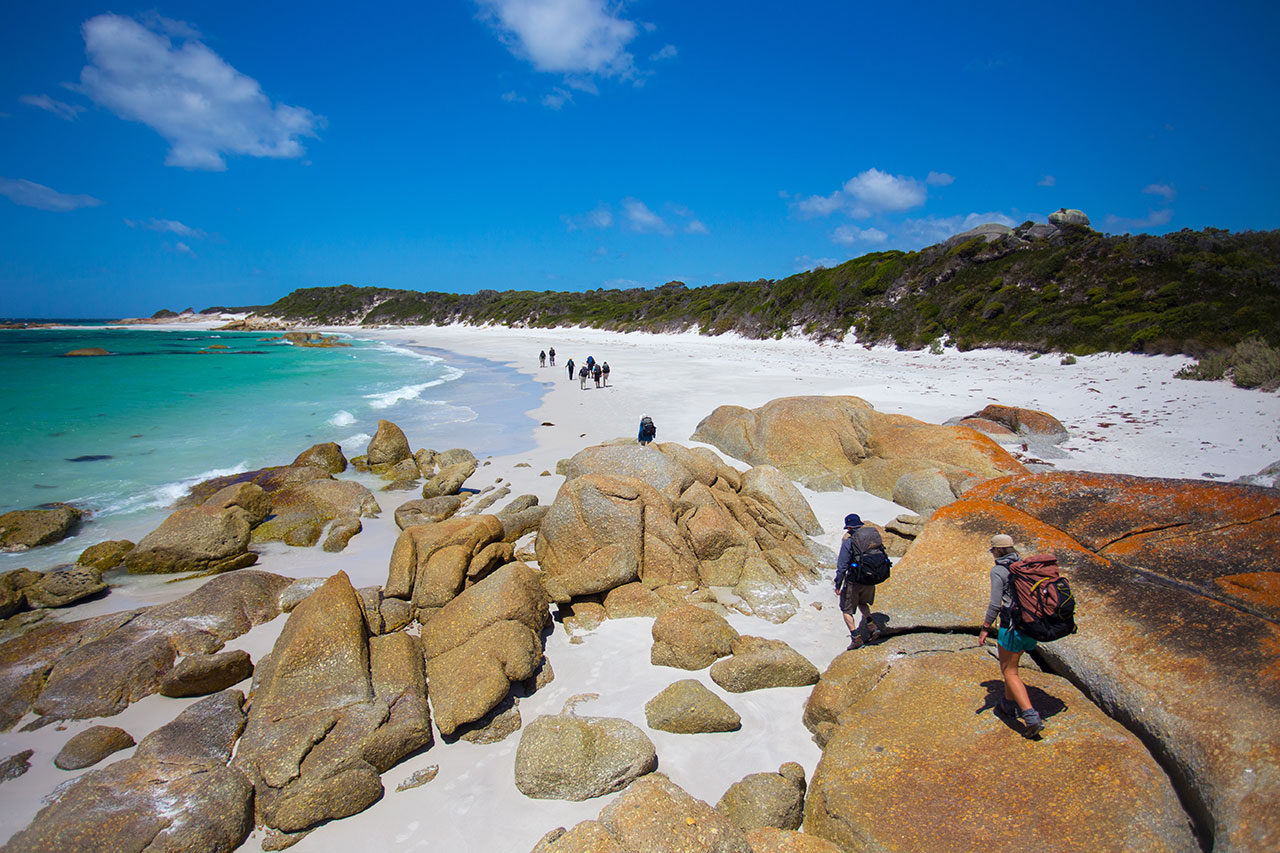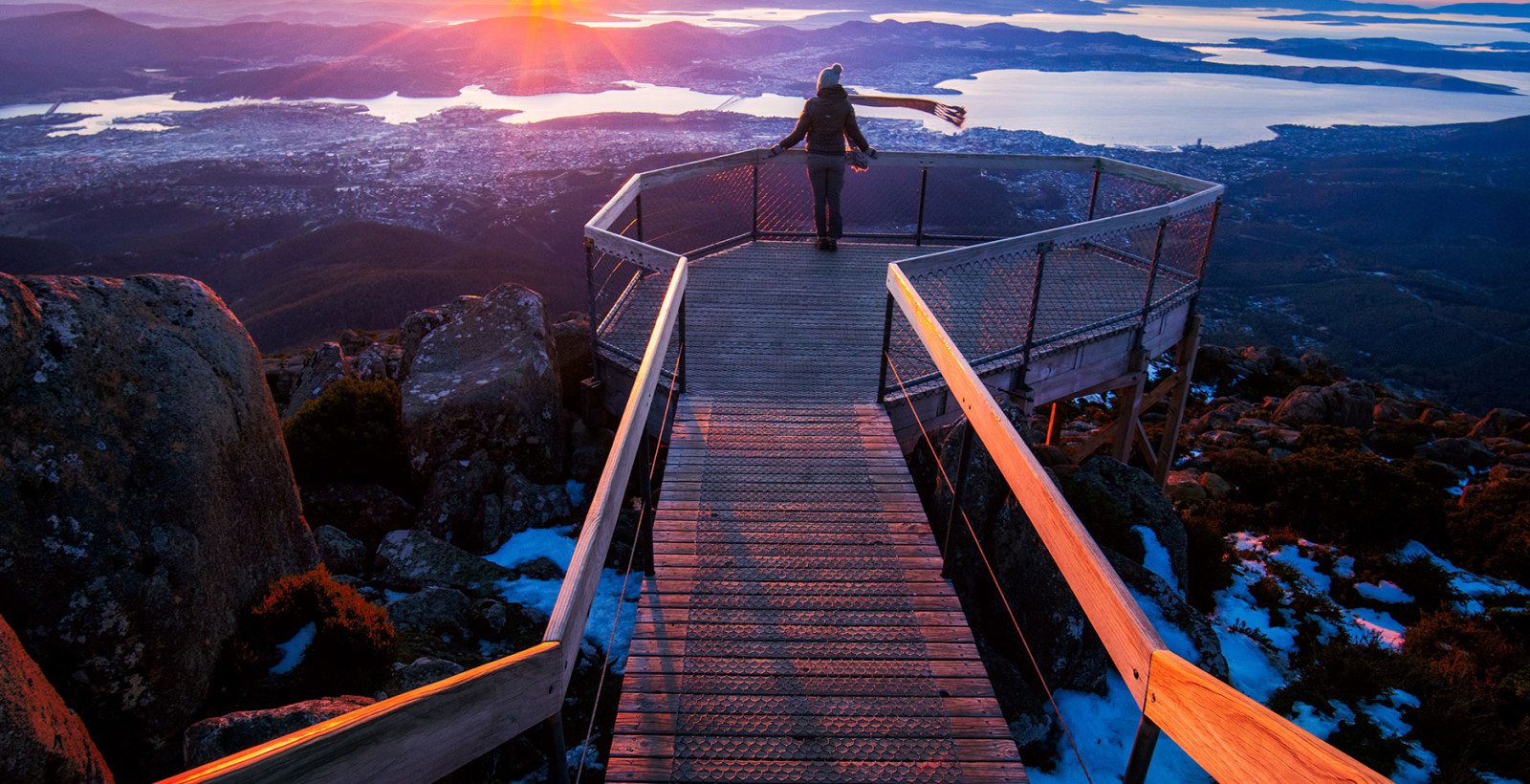Best Time To Travel To Tasmania
-
Author Inspiring Journeys
-
Date 14 Mar 2023
THE BEST TIME TO VISIT TASMANIA
TASMANIA gets a bad rap when it comes to climate and, while the destination carries the crown as Australia’s coldest state, it is warmer than the United Kingdom with Hobart the country’s second-driest capital after Adelaide.
Those planning a visit to Australia’s Apple Isle, and fretting about the weather, should take a page from British explorer Ranulph Fiennes’ book and remember “there is no such thing as bad weather, only bad clothing”.
WEATHER IN TASMANIA
The warmest days stretch across summer, with the most tempting temperatures coming between December and February when the mercury dependably climbs into the low 20s and the weather is comfortably warm and delightfully dry.
Sunny and still days can be relied upon to continue deep into autumn and, with the temperature sitting in the low 20s through the valleys and high teens on the coast, locals use the Indian summer to visit farms and vineyards sampling produce at post-summer perfection.
Winter is cold, with the average maximum temperature during the chilly season sitting between 7C and 11C, and it’s the state’s spot in the planet’s lowest latitudes that keeps the mercury from climbing between June and September.
The island sits square in the path of howling Southern Ocean squalls that drive icy Antarctic blasts north during winter, and can even bring snow to the higher slopes of Hobart’s Mount Wellington during summer.
Summer is the perfect time for alfresco dining, bushwalking, beachcombing and boating and the best places to stay have somewhere to sit in a shady garden, gaze across the mountains, or take in a seaside vista.
But those offering accommodation to travellers also know how to tempt during winter with an open fire, warm bath, and bottle of local pinot noir welcoming visitors into a snug sanctuary after a day of brisk sightseeing.
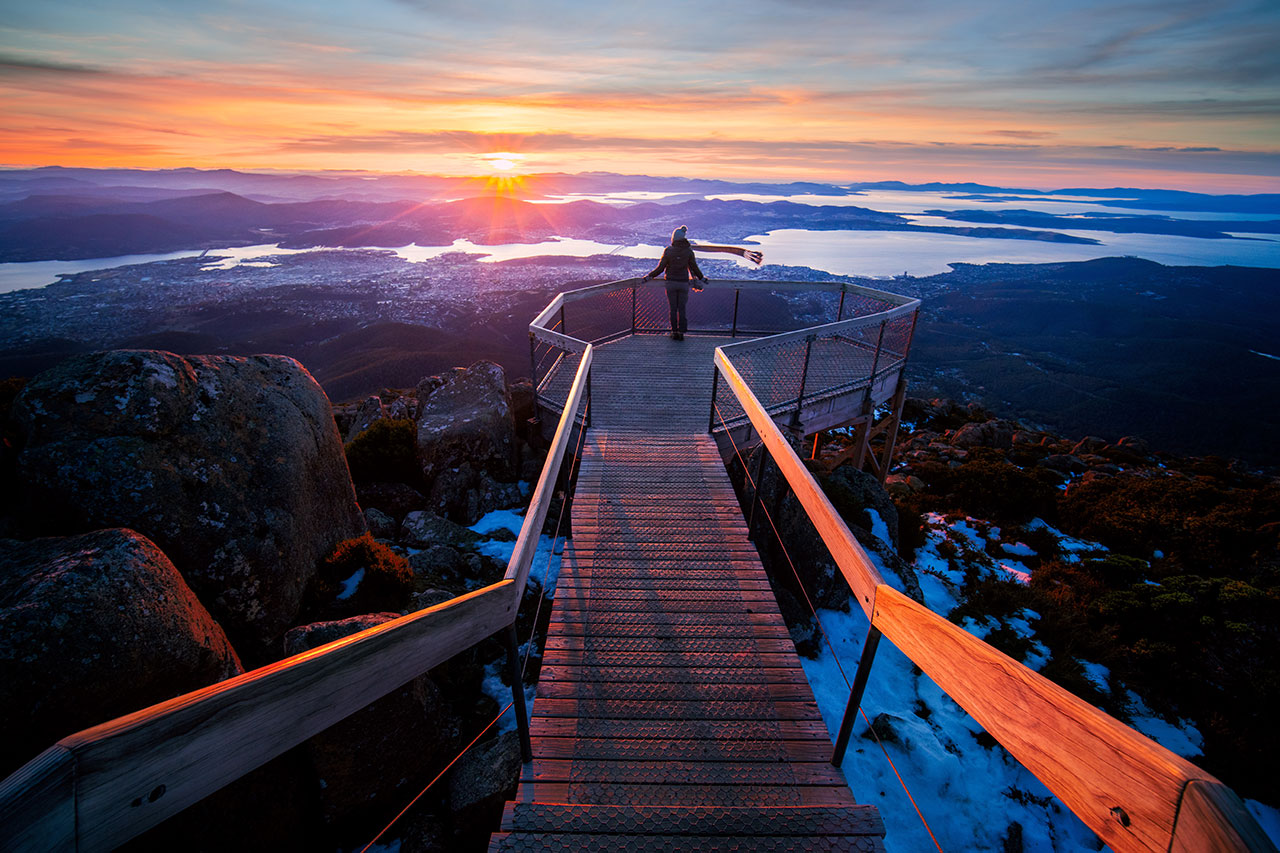
AUTUMN IN TASMANIA
Locals argue autumn is the ideal time to visit Australia’s most southerly state, with the warmer weeks of summer replaced by the clear days and crisp evenings ideal for outdoor exploring.
During March, April and May vast swathes of the landscape turn vibrant shades of red, orange and gold as the trees in manicured gardens and unkempt forests shed summertime foliage to make leaf peeping a popular pastime.
The state’s eight wine regions – from the Tamar Valley surrounding Launceston to the Derwent, Coal River and Huon valleys deep in the state’s south – entice those seeking to hold onto the sunshine to sample wine from cellar doors that are resting after the busy days of vintage.
WINTER IN TASMANIA
Tasmania is a magnet for mainlanders set on seeing the snow, and there’s always a better-than-average chance of witnessing the white fall somewhere in the state during July and August.
Hobart’s Mt Wellington is the most accessible place to sample the snowy spectacle – the temperature at the top of the 1200m peak is 10 degrees cooler than down below in the cosmopolitan capital – and Zig Zag Track is a scenic walking route for those wishing to wander around in the white stuff.
Cradle Mountain is world famous for becoming a wild white wonderland during winter, but it’s not a destination for inexperienced day-trippers, with the national park 165km from Hobart demanding visitors pack the right clothing and equipment when embarking while the weather is most fierce and unforgiving.
The clear nights of winter are also ideal for spotting the spectacular Southern Lights and, while it’s impossible to predict when the neon sprays will dance across the horizon, there is more chance of spotting the Aurora Australis in this state’s remote regions during this season.
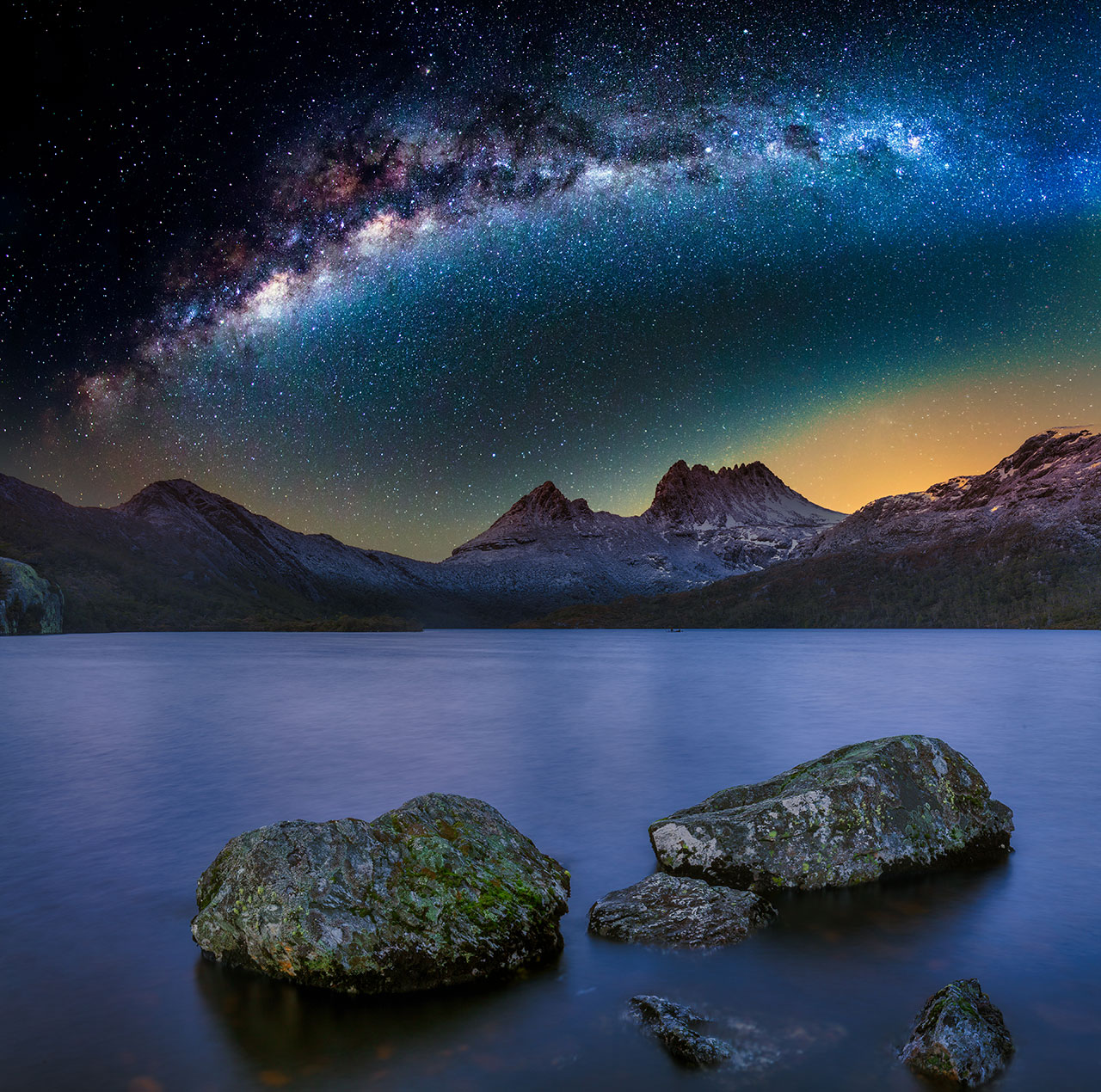
SPRING IN TASMANIA
If there were a single word to sum up springtime in the state it would be flowers, with parks and gardens dressed in the beautiful blooms that sprout when the soil begins to wake from wintertime napping.
The snow melts to make creeks run and rivers race, vineyards turn vibrant shades of green, patches of manicured lawn are perfect for picnics, and migrating whales pass the coast on their annual trip back to Antarctica.
Spring does get windy – remember those angry Southern Ocean gales – but gusts don’t linger long and are soon replaced by the sunny and still weather that’s perfect for wandering around wineries, cycling between cafes, or strolling the sand of a pristine east coast beach.
SUMMER IN TASMANIA
The Apple Isle boasts Australia’s longest days – with 15 hours of light around the estival solstice – and maximum temperatures well below the numbers experienced further north in Australia’s mainland states.
This makes summer the peak season for Tasmania tourism, with visitors packing everything from swimsuits for beach time to sandshoes for easy outdoor adventures.
It might be something as gentle as strolling between the historic structures at the Port Arthur Historic Site for insights into Australia’s convict history or following the footpath into Cataract Gorge to the more demanding hike across the Hazards to Wineglass Bay in the heart of Freycinet National Park.
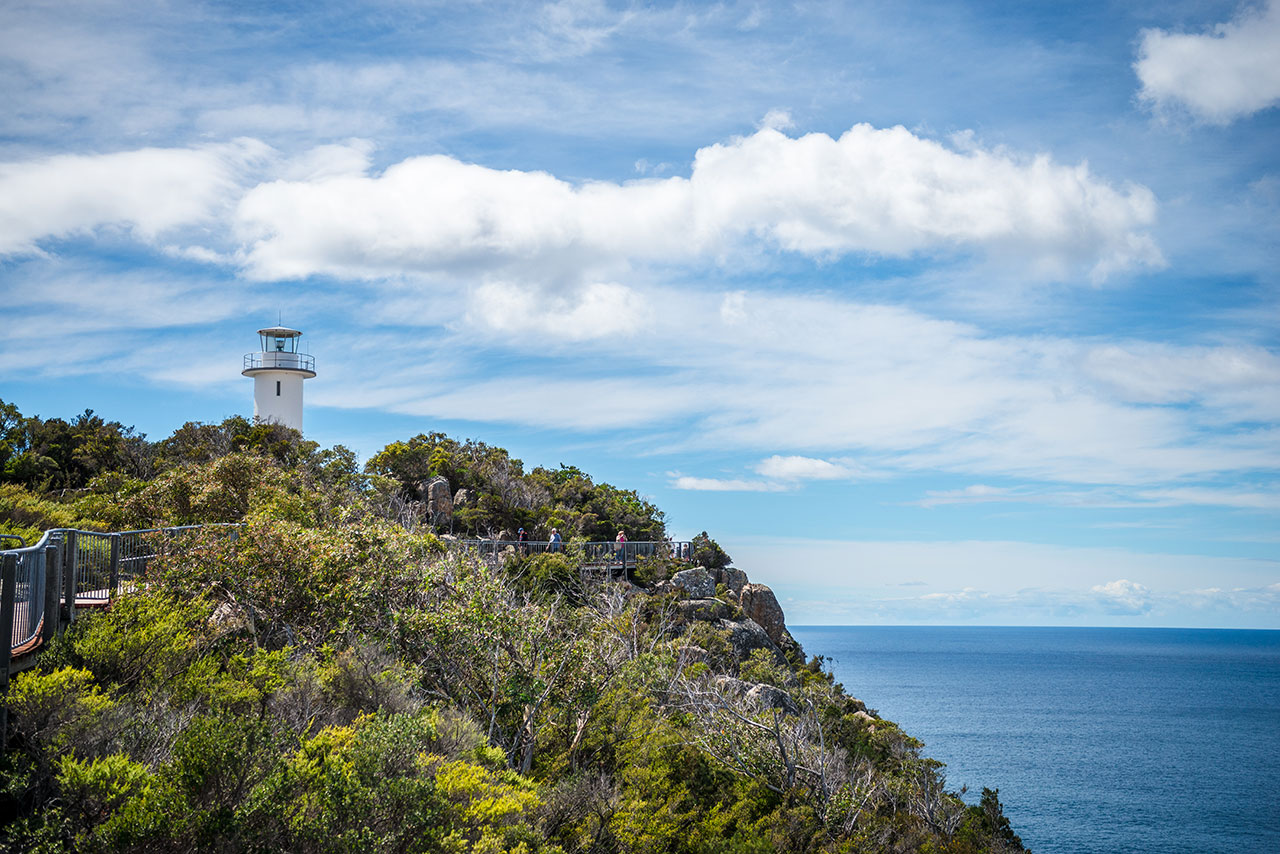
TIMING A TRIP FOR FESTIVAL FUN
Tasmania is punching way above its weight when it comes to festivals, with the dreamy but dynamic destination that’s home to just 500,000 people famous for celebrations that play into the local’s penchant for a party.
Some of the southern-most state’s most famous events happen during winter, with Dark MOFO and the Bay of Fires Winter Arts Festival headlining the annual attractions to draw the crowds in June. But there’s more on the cold-season calendar with the Festival of Voices, Huon Valley’s Mid-Winter Festival and Tassie Scallop Festa all kicking off in July.
At the other end of the year, when days are long and the weather agreeably warm, the Sydney to Hobart celebrations fill the capital immediately after Christmas while the Cygnet Folk Festival is a favourite two weeks into the new year.
Then it’s into February when the Wooden Boat Festival, Launceston’s Festivale, and Evandale Village Fair with its penny-farthing racing provide an enticing argument for a sojourn before the end of summer.
TASMANIA FOR ALL SEASONS WITH INSPIRING JOURNEYS
At Inspiring Journeys we celebrate Australia’s island state as a destination boasting unique flora and fauna, national parks close to the biggest settlements making them a cinch to explore, a heaped helping of history, the world’s cleanest air, and remarkable food and wine scene.
Taste of Tasmania is a seven-day journey that starts in Hobart and follows the east coast to take in iconic addresses like the Huon Valley, Maria Island, Freycinet National Park and the Bay of Fires before swinging inland to embark on a day-long “paddock, plate and pantry tour” around Launceston.
The agreeable amble is carefully curated to mix famous places with hidden gems and combines the wild landscapes of the east coast with time to talk to those making the gourmet goodies for which this destination has become world famous.
